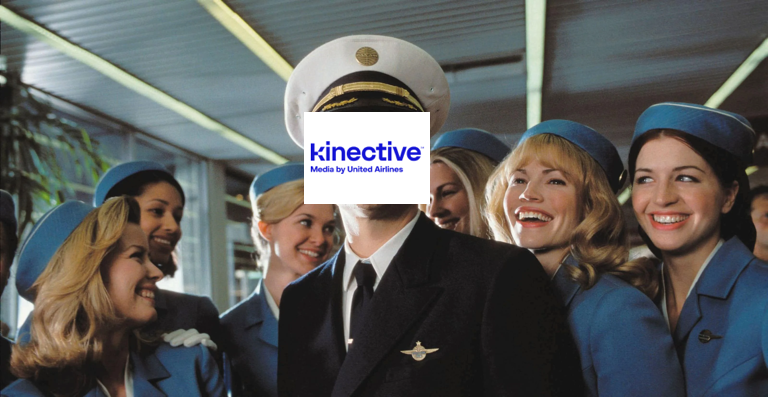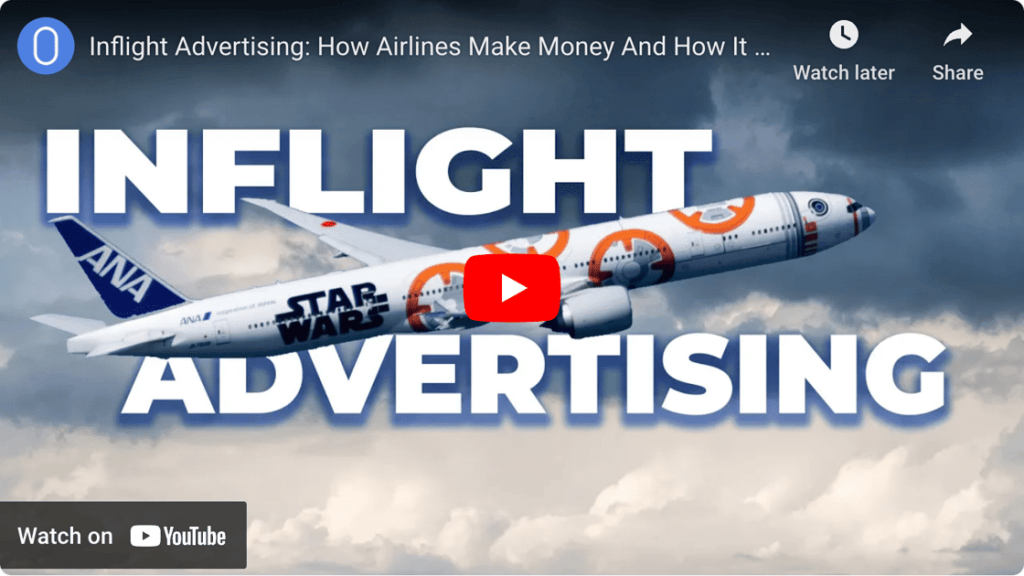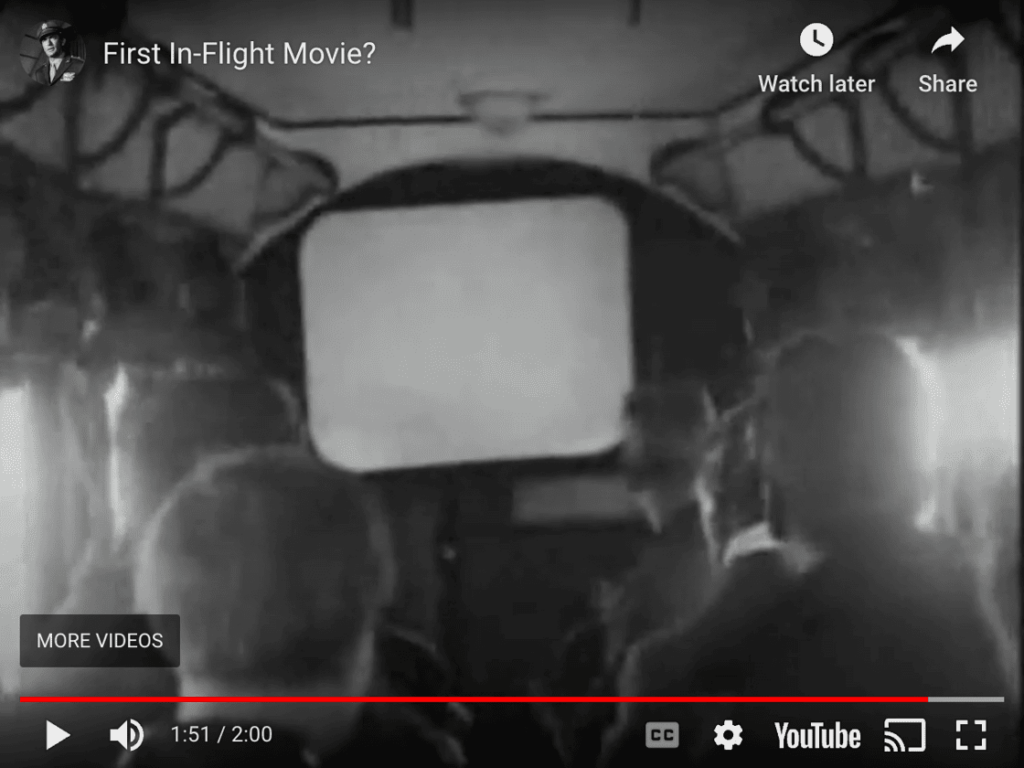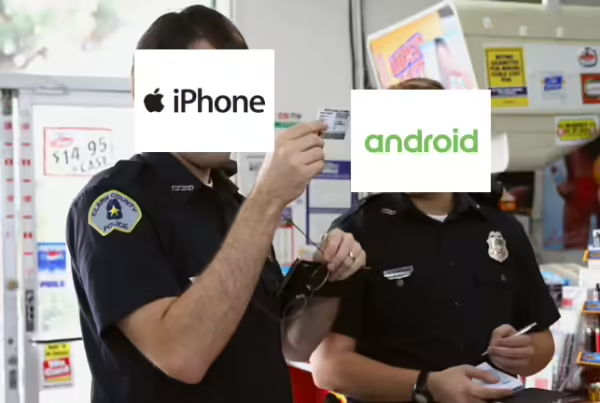
Setting the table: United Airlines recently launched Kinective, an ad network that provides personalized/targeted advertising.
Quote from Eric Seufert – Media Strategist @ Mobile Dev Memo:
“Everything is an Ad Network.”
Mr. Screens’ Crystal Ball: Video advertising will expand beyond televisions and mobile phones. A few areas we have covered include connected cars and 3D billboards.
Five big questions re: TV ads on airplanes:
1) How do airlines make money from advertising?
2) Why do airlines want to sell advertising?
3) How long have we been watching TV/movies on airplanes?
4) What is the future of in-flight entertainment?
5) How much do airlines spend licensing content?
Big question #1: How do airlines make money from advertising?
Quick answer: Airlines like United Airlines are joining the retail media madness by launching their own ad network.
Possible ad formats for Kinective include:
1) Video screen
2) Boarding pass
3) Magazine
4) Seatback tray label
5) Overhead bin
6) Sales pitch from the flight attendant
FYI: Airlines have offered targeted ads with boarding passes for 15+ years.

Big question #2: Why do airlines want to sell advertising?
Quick answer: Airlines have low margins from their core product, similar to smart TV manufacturers. Advertising offers an opportunity to increase their revenue per customer.
Quick math on revenue per airline passenger:
1) 7 hours per round-trip flight
2) $368 average fare
3) 13% gross margin from fare
4) $48 in gross profit per round-trip ticket
5) $7 in gross profit per passenger hour
6) 853M domestic flights per year
7) 3T passenger hours per year
Bottom line: Generating $0.10/hour in advertising revenue on flights would create a $300M ad market in the U.S. alone.
Video: Inflight Advertising: How Airlines Make Money And How It Affects You

Big question #3: How long have we been watching TV/movies on airplanes?
Quick answer: We watched our first in-flight movie 18 years after the Wright Brothers invented flight! In 1921, Aeromarine Airways showed the film “Howdy Chicago!” as the 11 passengers circled Chicago.

Video: First In-Flight Movie?

Wow: TWA ran advertisements back in 1961 to promote in-flight movies!
Timeline for watching TV/movies on airplanes:
1) 1903 – The Wright Brothers invent aviation
2) 1921 – The first in-flight movie
3) 1960s – In-flight movies became mainstream
4) 1988 – Seatback screens arrive

Big question #4: What is the future of in-flight entertainment?
Quick answer: In years past, bringing your own device (BYOD) was the trend, but now companies are installing new screens instead. United Airlines has ordered 300K new screens for its fleet. Larger planes will get 16-inch 4K OLED screens, which look amazing!
Quote from Mrs. Screens – Super Mom:
“Any mom with young kiddos will agree, the built-in screens are best. You need both hands free for holding little ones and passing out snacks.”

Quote from Mark Muren – Managing Director for Identity @ United Airlines:
“It’ll be one very big airborne movie theater.”
Bottom line: These in-flight entertainment systems can cost $10K per seat or $5M per aircraft, in addition to higher fuel costs. As a result, airlines are trying to find ways to offset these costs and generate new revenue streams.
Big question #5: How much do airlines spend licensing content?
Quick answer: A typical airline offers 100+ movies and can spend $20M annually on licensing. A single movie can earn $35K – $50K per airline/month.



